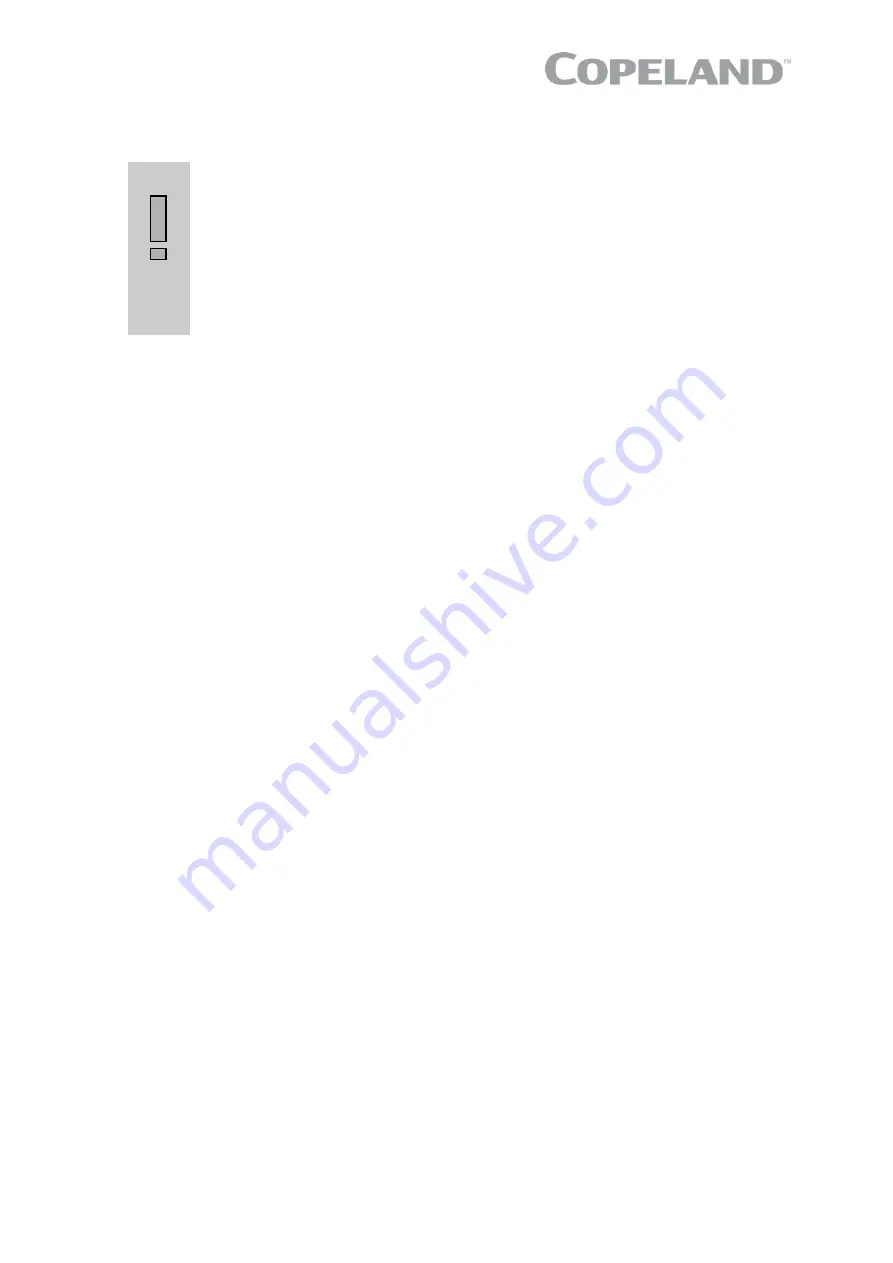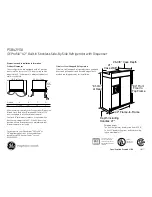
C6.1.11/0718-0619/E
43
4.2 Charging procedure
4.2.1 Refrigerant charging procedure
IMPORTANT
CO
2
refrigerant! Risk of dry ice!
It is important to charge gaseous CO
2
to a
pressure level well above the triple point of the refrigerant, ie, 5.185 bar(a) to
avoid dry ice. A gaseous pre-charge of 10 bar in the whole system is common
practice.
Inadequate charge! Overheating!
The compressor design requires system
charging as quickly as possible with liquid refrigerant into the liquid line. This
will avoid running the compressor under conditions whereby insufficient
suction gas is available not only to cool the motor but also to limit the discharge
line.
Pre-charging must be done with gaseous refrigerant both on suction and discharge/liquid sides,
through the service valve on the liquid receiver and the suction shut-off valve on the compressor. It
is important to charge gaseous CO
2
to an absolute pressure level above the triple point of the
refrigerant, ie, 5.185 bar to avoid dry ice. A gaseous pre-charge of 10 bar in the whole system is
common practice.
After pre-charging gaseous CO
2,
the main quantity of refrigerant can be charged liquid to the service
connection port on the liquid receiver. It is advisable to pre-fill the suction side with a partial charge
to avoid vacuum operation during initial start-up. Further charging can be carried out by carefully
filling refrigerant through the suction line while simultaneously checking the sight glasses (on liquid
receiver and after filter drier in liquid line) when the system is in operation.
The refrigerant charge might vary depending on system size. The proper amount of refrigerant shall
be charged by a qualified technician during unit commissioning based on actual application needs.
In order to prevent system overcharge for high ambient temperatures Emerson recommends
charging the liquid receiver only up to 60% considering a typical piping length of 30 meters.
▪
In high ambient conditions (above 30°C), charge until liquid refrigerant is visible in the upper
sight glass of the liquid receiver.
▪
In low ambient conditions (below 10°C), charge until liquid refrigerant is visible in the lower sight
glass of the liquid receiver.
▪
For any temperature between these values, charge until the liquid refrigerant level is between
the two sight glasses.
NOTE: Never charge the system to a liquid level higher than the upper sight glass of the liquid
receiver.
NOTE:
In order to meet the requirements of the Ecodesign Directive 2009/125/EC with regard
to efficient system operation, ensure the refrigerant charge is sufficient.
4.2.2 Oil charging procedure
Copeland EazyCool CO
2
refrigeration units are supplied with a compressor oil charge only. After
commissioning, the oil level should be checked and topped up if necessary.
NOTE: The oil level should be approximately halfway up the sight glass.
As mentioned in chapter 2.6.1 "Qualified refrigerant and oil", Emerson recommends charging with
polyolester Emkarate RL 68 HB.
Additional oil charging is done through the Schräder valve located on the suction shut-off valve.
The compressor is equipped with an OW5 TraxOil to prevent it from running with an insufficient oil
level
– see chapter 2.13 "Oil level monitoring device OW5 TraxOil". In case of low oil level, the
controller will immediately shut the compressor down. The compressor will automatically start again
when an appropriate amount of oil is applied.
4.3 Maximum compressor cycle
The factory settings of the system controller take into account the maximum number of permitted
starts and stops of the compressor, as well as the running time and minimal downtime. Emerson
recommends to change these settings only in exceptional cases, eg, when the liquid line pressure
cannot be kept by the factory settings.
Summary of Contents for Copeland EazyCool OME-4MTL-09X
Page 1: ...Copeland Eazycool CO2 Refrigeration Units Application Guidelines ...
Page 5: ......
Page 68: ...C6 1 11 0718 0619 E 63 ...
















































